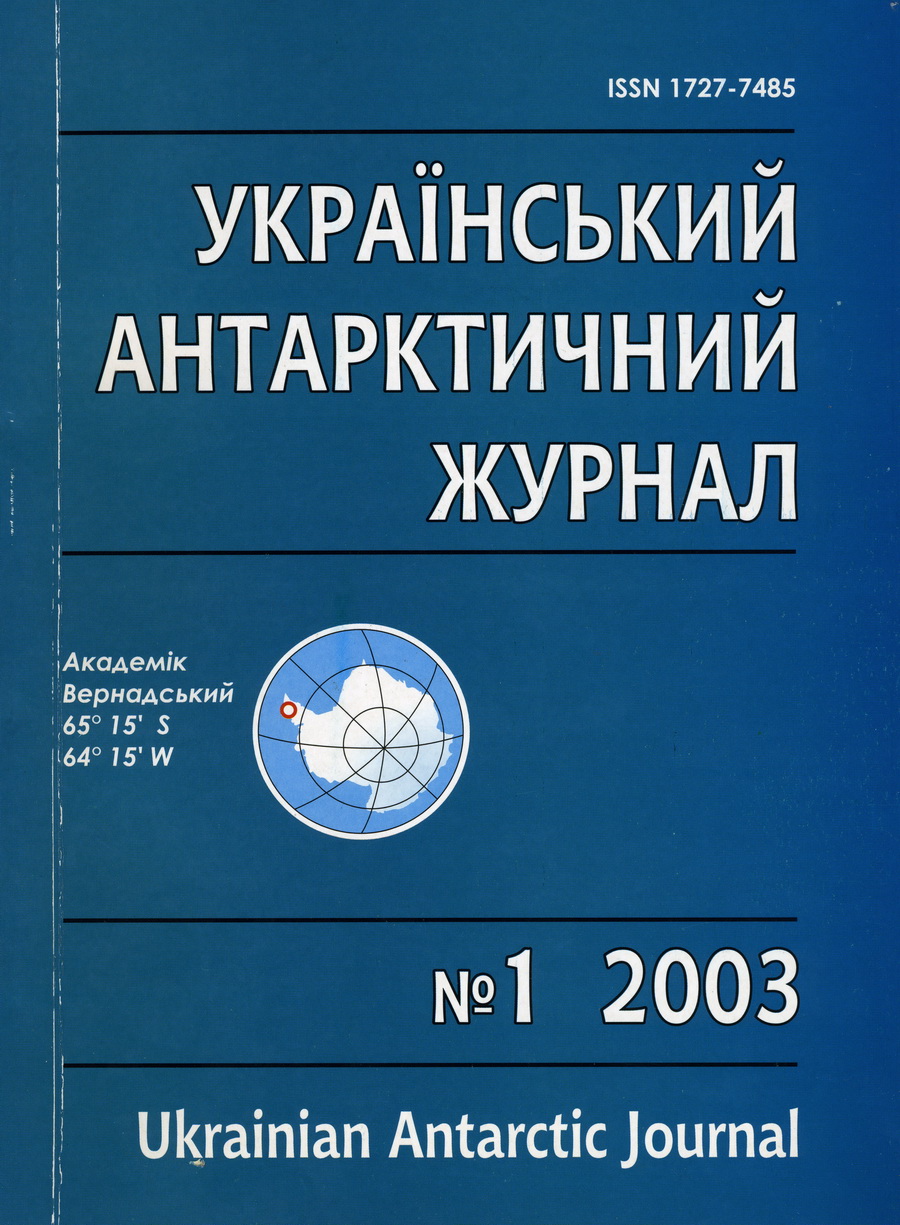Organic matter composition of Salpa thompsoni Foxton from the region of the Southern Ocean
- Salpa thompsoni,
- proximate chemical composition,
- carbon,
- condition
Abstract
The proximate chemical composition of Salpa thompsoni Foxton, the most mass salps species from the Southern Ocean, was analyzed during the 7-th Ukraine Antarctic expedition (9.03 - 19.03 2002). At the average organic matter content equaled to 3,92 ± 1,12 mg/g, its composition was predominated by protein (56,6%), followed by carbohydrate (22,6%), lipids (11,5%) and aminoacides (9,3%). Calculated carbon content amounted to 2,02 ± 0,57 mg/g of wet mass. Structural lipid fractions were predominated in the total lipids, the share of triacilglycerides and wax did not exceed 36%. The specific organic matter content, as well as its main compounds, successively decreased with increasing of wet mass in the salps. Part of store lipids was higher in large size specimens. Carbon and store lipids variability in the chemical composition of Salpa thompsoni could be depended on heterogeneity of environmental conditions, especially in the animal food supply.
References
- Kopytov, Yu.P. (1983). Novyi variant tonkosloinoi hromatografii lipidov i uglevodov [A new version of thin-layer chromatography of lipids and carbohydrates]. Ekologiia moria, 17, 76-80. (In Russian)
- Kuz'menko, M.I. (1975). Opredelenie aminnogo azota ningidrinovym reaktivom novogo sostava [Determining the amine nitrogen using ninhydrin reagent of a new composition]. Metody fiziologo-biohimicheskogo issladovaniia vodorosley v gidrobiologicheskoi praktike. Kyiv, Naukova dumka. 116-118. (In Russian)
- Minkina, N.I. (2000). Intensivnost obmena Salpa thompsoni Foxton [Intensity of the metabolism of Salpa thompsoni Foxton]. Bulleten UAC, 3, 241-245. (In Russian)
- Samyshev, E.Z. (2000). Salpy v AChA: sostav, obilie, raspredelenie [Salps in AChA: composition, amount, distribution]. Bulleten UAC, 3, 237-240. (In Russian)
- Alcaraz, M., Saiz, E., Fernandez, J.A. et al. (1998). Antarctic zooplankton metabolism: Carbon requirements and ammonium excretion of salps and crustacean zooplankton in the vicinity of the Bransfield Strait during January 1994. J. Mar. Sys., 17(1-4), 347-359.
- Amenta, J.S. (1964). A rapid chemical method for quantification of lipids separated by thinlayer chromatography. J. Lipid Res., 5(3), 270-273.
- Clarke, A., Holmes, L.J., & Gore, D.J. (1992). Proximate and elemental composition of gelatinous zooplankton from the Southern Ocean. J. Exp. Mar. Biol. Ecol., 155, 55-68.
- Curl, H. (1962). Standing crops of carbon, nitrogen and phosphorus and transfer between trophic levels in continental shelf waters south of New York. Rapp. Proc.-Verb. Cons. Int. Explor. Mer., 153, 183-199.
- Dubois, M., Gilles, K.A., Hamilton, J.K. et al. (1956). Colorimetric method for determination of sugars and related substances. Anal. Chem., 28, 350-356.
- Hartree, E.F. (1972). Determination of protein: a modification of the Lowry method that gives a linear photometric response, 48, 422-427.
- Heron, A.C., McWilliam, P.S., & DalPont, G. (1988). Length-weight relation in Thalia democratica and potential of salps as a source of food. Mar. Ecol. Prog. Ser., 42,125-132.
- Larson, R.J. (1986). Water content, organic content and carbon and nitrogen composition of medusae from the northeast Pacific. J. Exp. Mar. Biol. Ecol., 99(2), 107-120.
- Loeb, V., Siegel, V., Holm-Hansen, O. et al. (1997). Effects of sea-ice and krill or salps dominance on the Antarctic food web. Nature, 387, 897-900.
- Madin, L.P., Cetta, C.M., & McAlister, V.L. (1981). Elemental and biochemical composition of salps (Tunicata: Thaliacea). Mar. Biol., 63, 217-226.
- Omori, M.S., & Ikeda, T. (1984). Methods in Marine Zooplankton Ecology. A Wiley-interscience publication. John Wiley and Sons: New York, 1984. 332 p.
- Perissinotto, M., & Pachomov, E.A. (1998). The trophic role of the tunicate Salpa thompsoni in the Antarctic marine ecosystem. J. Mar. Sys., 17(1-4), 361-374.

